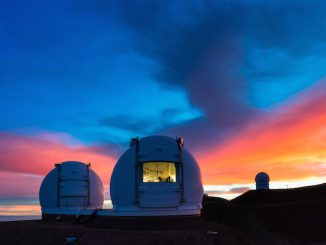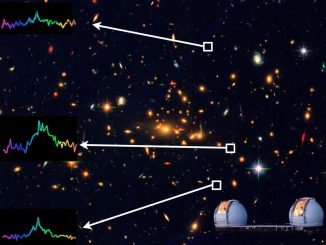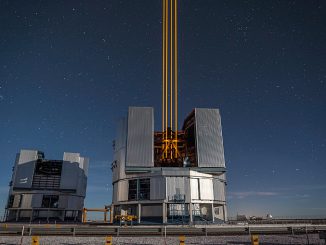
Keck Observatory



Keck Observatory captures rare high-resolution images of exploded star
Scientists will now be able to measure how fast the universe is truly expanding with the kind of precision not possible before. This, after an international team of astronomers led by Stockholm University, Sweden, captured four distinct images of a gravitationally lensed Type Ia supernova, named iPTF16geu.


Astronomers confirm faintest early-universe galaxy ever detected
An international team of scientists has detected and confirmed the faintest early-universe galaxy ever using the ten-metre Keck II telescope on the summit on Maunakea, Hawaii. The team analysed three separate images of the object gravitationally lensed by a foreground galaxy cluster, revealing the distant galaxy as it was 13 billion years ago.

Quadruple laser system heralds sharper images for ESO’s Very Large Telescope
ESO’s Paranal Observatory in Chile hosted an event to mark the first light for the four powerful lasers that form a crucial part of the adaptive optics systems on ESO’s Very Large Telescope. Attendees were treated to a spectacular display of the most powerful laser guide stars ever used for astronomy against the majestic southern sky.

Most distant massive galaxy cluster identified
The early universe was a chaotic mess of gas and matter that only began to coalesce into distinct galaxies hundreds of millions of years after the Big Bang. It would take several billion more years for such galaxies to assemble into massive galaxy clusters — or so scientists had thought. Now astronomers have detected a massive, sprawling, churning galaxy cluster that formed only 3.8 billion years after the Big Bang, some 10 billion light years from Earth.



